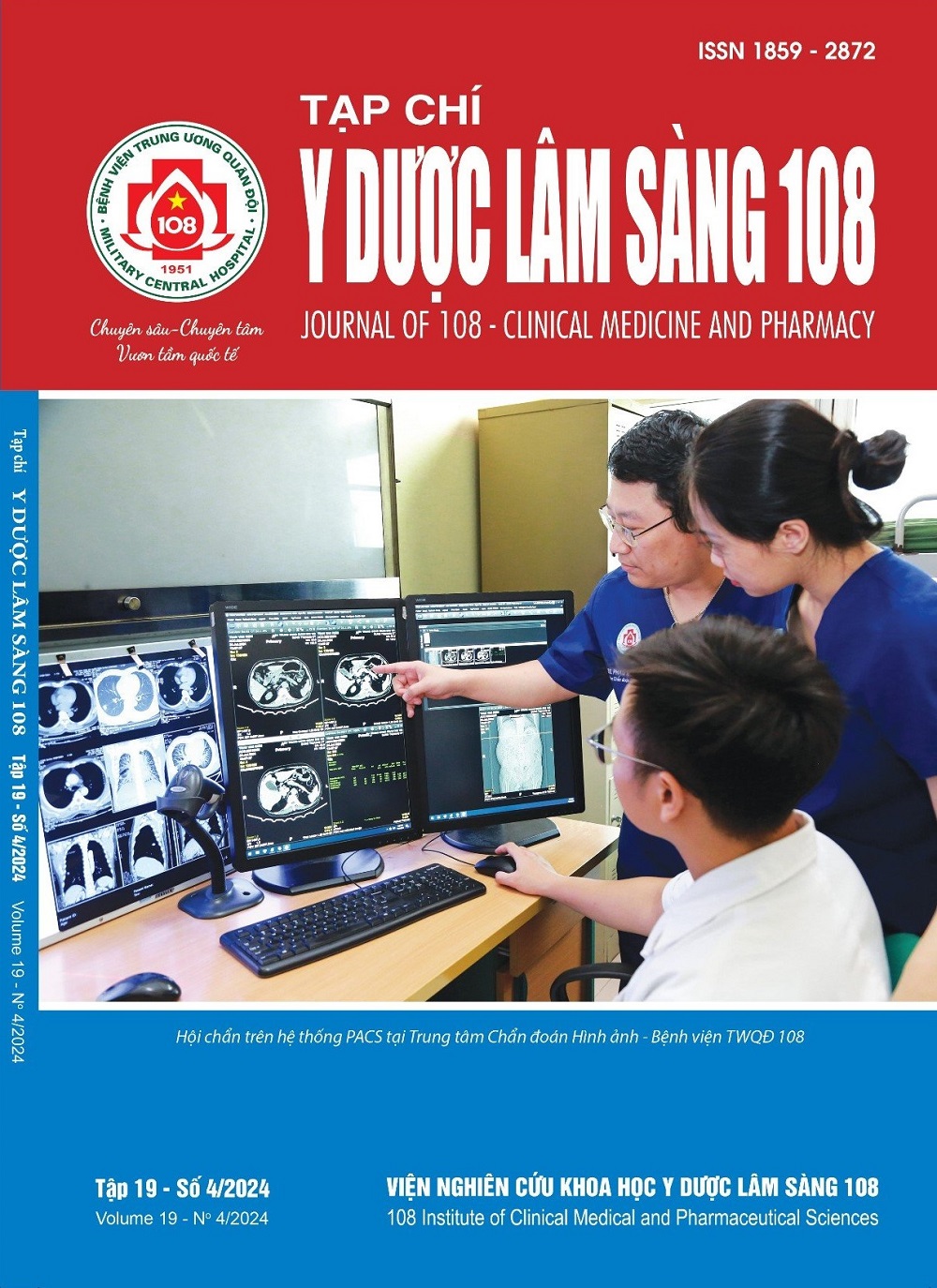Studying the imaging characteristics of multi-detector row computed tomography in diagnosis of periampullary tumors
Main Article Content
Keywords
Abstract
Objective: To study the imaging characteristics of multi-detector row computed tomography in diagnosis of periampullary tumors. Subject and method: A retrospective, prospective and descriptive study was carried out on 79 patients with clinically suspected periampullary tumors, underwent surgery and had pathological results, from May 2017 to February 2021 at 108 Military Central Hospital. Result: Pancreatic head tumors were the most common (40.5%). Pancreatic head tumors and ampulla tumors accounted for the majority of cases (74.7%). 58.9%, had tumors < 3cm in size. Majority of tumors had irregular margin and clear boundary, accounting for 79.5% and 63%, respectively. Tumors with heterogeneous attenuation accounted for the majority of cases (61.6%). After contrast injection, most tumors absorbed much and unevenly of contrast, accounting for 89% and 68.5%, respectively. The majority of tumors did not invade surrounding blood vessels, accounting for 76.7%. Almost all tumors that invaded blood vessels were pancreatic head tumors, accounting for 94.1%. Conclusion: Multi-detector row CT, collated to surgery and pathological results, is highly valuable in evaluating the imaging characteristis of periampullary tumors. This helps increasing the efficiency in diagnosis and prognosis of surgical possibilities for patients with periampullary tumors.
Article Details
References
2. Brennan DD, Zamboni GA, Raptopoulos VD, Kruskal JB (2007) Comprehensive preoperative assessment of pancreatic adenocarcinoma with 64-section volumetric CT. RadioGraphics 27:1653–1666.
3. Fong ZV, Tan WP, Lavu H et al (2013) Preoperative imaging for resectable periampullary cancer: clinicopathologic implications of reported radiographic findings. Journal of G.I Surgery 17(6): 1098-1106.
4. Kanji ZS and Gallinger S (2013) Diagnostic and management of pancreatic cancer. CMAJ 1-7.
5. He J, Ahuja N, Makary MA, Cameron JL, Eckhauser FE, Choti MA, Hruban RH, Pawlik TM, Wolfgang CL (2013) 2564 resected periampullary adenocarcinomas at a single institution: Trends over three decades. HPB 16: 83-90.
6. Williams JL, Chan CK, Toste PA, Elliott IA, Vasquez CR, Sunjaya DB, Swanson EA, Koo J, Hines OJ, Reber HA, Dawson DW, Donahue TR (2016) Association of Histopathologic Phenotype of Periampullary Adenocarcinomas With Survival. JAMA Surg 152(1):82-88. doi: 10.1001/jamasurg.2016.3466..
7. Chen SC, Shyr YM, Wang SE (2013) Longterm survival after pancreaticoduodenectomy for periampullary adenocarcinomas. HPB 15: 951-957.
8. Raman SP, Fishman EK (2015) Abnormalities of the distal common bile duct and ampulla: diagnostic approach and differential diagnosis using multiplanar reformations and 3D imaging. AJR 203: 17-28.
 ISSN: 1859 - 2872
ISSN: 1859 - 2872
